The colossal bio-network of connected devices, which has been growing for the previous two decades over the globe, is named the Internet of Things. Nowadays, a range of objects around us can collect, send, and process data to other servers and applications. The IoT Protocol is such a system that will transfer data online. But it will only transfer data when the communication network between the two connected devices is safe. What are the things that make such a secure remote connection possible?
Some languages are invisible. This language usually allows communication between two or more physical objects. These objects are composed of IoT Protocols and standards. In this way, the Internet of Things protocols makes the entire work possible.
We have managed to come up with the most prominent Internet of Things protocols along with the details. Let’s have a look.
Top Standard IoT Protocols
We can divide the Internet of Things protocols into two basic types: IoT Network Protocols and IoT Data Protocols. There are diverse options for connectivity. This article will explain the major IoT Protocols the developers offer you.
1. Bluetooth
One of the most broadly used wireless technologies short-range is Bluetooth. You can quickly get Bluetooth apps that offer you wearable technology for pairing up with smart gadgets.
The recently introduced Bluetooth protocol among the IoT protocols is BLE or Bluetooth Low-Energy protocol. It will afford the range of conventional Bluetooth combined with lower power consumption supremacy.
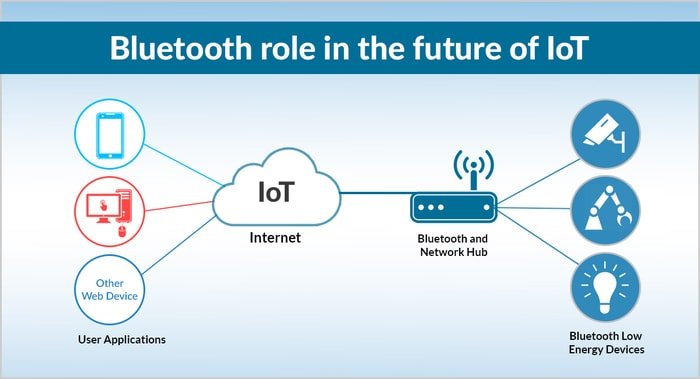 You must remember that BLE is not designed to transfer large files and goes perfectly with small data portions. This is the reason Bluetooth is leading the Internet of Things protocols of this century.
You must remember that BLE is not designed to transfer large files and goes perfectly with small data portions. This is the reason Bluetooth is leading the Internet of Things protocols of this century.
The newly invented Bluetooth Core Specification 4.2 adds up to one innovative Internet Protocol Support Profile. It permits Bluetooth Smart Sensor to get access to the internet straight via 6LoAPAN.
2. WiFi
According to many electronic designers, WiFi is the best choice for IoT integration. It is because of the infrastructure it bears. It has quick data transfer rates along with the aptitude to control a large quantity of data.
 The widespread WiFi standard 802.11 allows you to transfer hundreds of megabits in only one second. The only drawback of this IoT protocol is that it can consume excessive power for some IoT applications. It ranges approximately 50 m, and along with working on internet protocol standards, it includes IoT Cloud infrastructure access. The frequencies are 2.4GHz and 5GHz bands.
The widespread WiFi standard 802.11 allows you to transfer hundreds of megabits in only one second. The only drawback of this IoT protocol is that it can consume excessive power for some IoT applications. It ranges approximately 50 m, and along with working on internet protocol standards, it includes IoT Cloud infrastructure access. The frequencies are 2.4GHz and 5GHz bands.
3. ZigBee
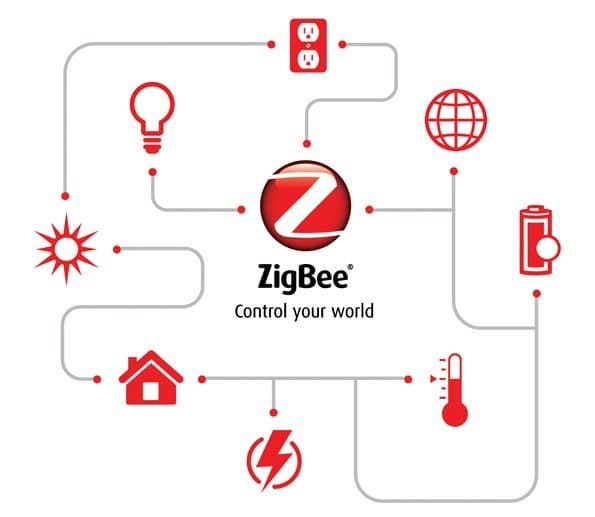 Just like Bluetooth, there is a vast user base for ZigBee. Among the Internet of Things protocols, ZigBee is designed more for the industrials and less for the consumers. It usually operates at a frequency of 2.4GHz. This is ideal for industrial sites where data is generally transferred over low rates amongst homes or buildings.
Just like Bluetooth, there is a vast user base for ZigBee. Among the Internet of Things protocols, ZigBee is designed more for the industrials and less for the consumers. It usually operates at a frequency of 2.4GHz. This is ideal for industrial sites where data is generally transferred over low rates amongst homes or buildings.
ZigBee and the popular ZigBee Remote Control are popular famed IoT Security Protocols for supplying secure, low-power, scalable solutions along with high node counts. The ZigBee 3.0 has taken the protocol to a single standard. It made it handier.
4. MQTT IoT
MQTT IoT is a message protocol, and the full form is Message Queue Telemetry Transport. It was developed in 1999 by Arlen Nipper (Arcom) and Andy Stanford-Clark (IBM.) This is mostly used for monitoring from a remote area in IoT. The principal task that MQTT does is obtaining data from so many electrical devices.
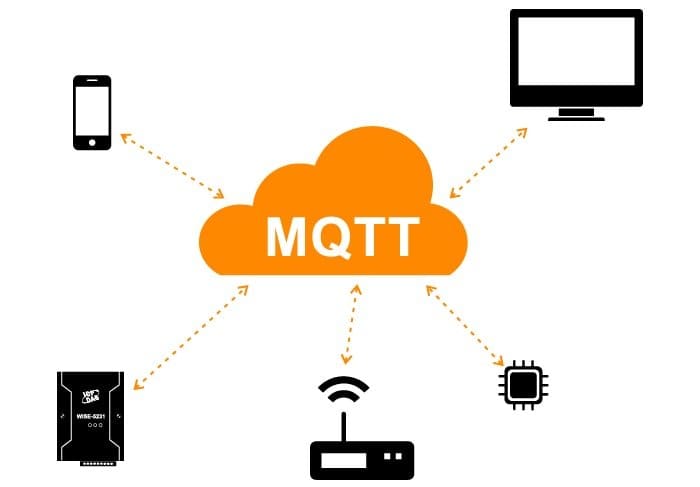 It also conveys them to the IT communications or infrastructure. A hub-and-spoke architecture is fundamentally ordinary for MQTT IoT Protocol. It works on top of the TCP to supply reliable yet simple streams of data.
It also conveys them to the IT communications or infrastructure. A hub-and-spoke architecture is fundamentally ordinary for MQTT IoT Protocol. It works on top of the TCP to supply reliable yet simple streams of data.
This MQTT protocol is made of three core components or mechanisms: Subscriber, Publisher, and Broker. The work of the publisher is generating data and transmitting the data to the subscriber with the help of the broker. Ensuring security is the job of the broker. It does it by checking and rechecking the authorization of the subscribers and the publishers.
This protocol is a preferred option for all IoT-based devices. These also provide enough information-routing functions to cheap, low-memory, power-consuming, and small devices with the help of the low and vulnerable bandwidth-based network.
5. CoAP
The CoAP or Constrained Application Protocol, internet productivity, and utility protocol are mainly developed for restricted smart gadgets. The design of CoAP is for using it among devices with an identical restricted community. It includes general nodes and devices on the internet and different restrained networks and devices joined on the internet.
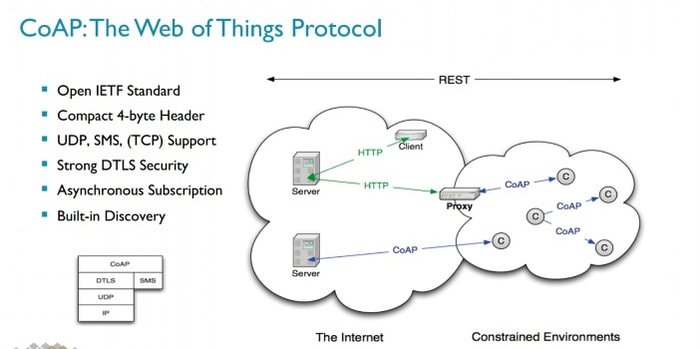 IoT systems based on HTTP protocols can go tremendously with CoAP IoT Network Protocols. It uses the protocol UDP for the implementation of lightweight data. Just like HTTP, it also uses restful architecture.
IoT systems based on HTTP protocols can go tremendously with CoAP IoT Network Protocols. It uses the protocol UDP for the implementation of lightweight data. Just like HTTP, it also uses restful architecture.
It is also used inside mobiles and other social communities that are basic programs. CoAP helps in getting rid of ambiguity through HTTP get, put up, delete, and placed strategies.
6. DDS
Amongst the Internet of Things protocols, the IoT Messaging Protocols – DDS or Data Distribution Service is a standard for high-performance, expandable, and real-time machine-to-machine communication.
The Data Distribution Service – DDA is developed and designed by OMG or Object Management Group. With the help of DDS, you can transfer data both in low-footprint devices and with Cloud platforms.
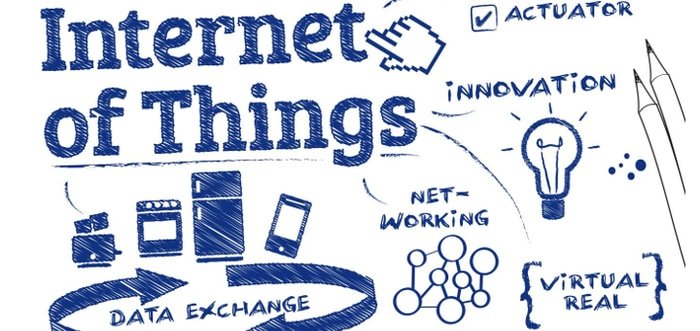 The Data Distribution Service includes two significant layers. Those are the DCPS and the DLRL. The DCPS or Data-Centric Publish-Subscribe works by delivering information to the subscribers. The DLRL or Data-Local Reconstruction Layer does its job by providing an interface to the Data-Centric Public-Subscribe functionalities.
The Data Distribution Service includes two significant layers. Those are the DCPS and the DLRL. The DCPS or Data-Centric Publish-Subscribe works by delivering information to the subscribers. The DLRL or Data-Local Reconstruction Layer does its job by providing an interface to the Data-Centric Public-Subscribe functionalities.
7. NFC
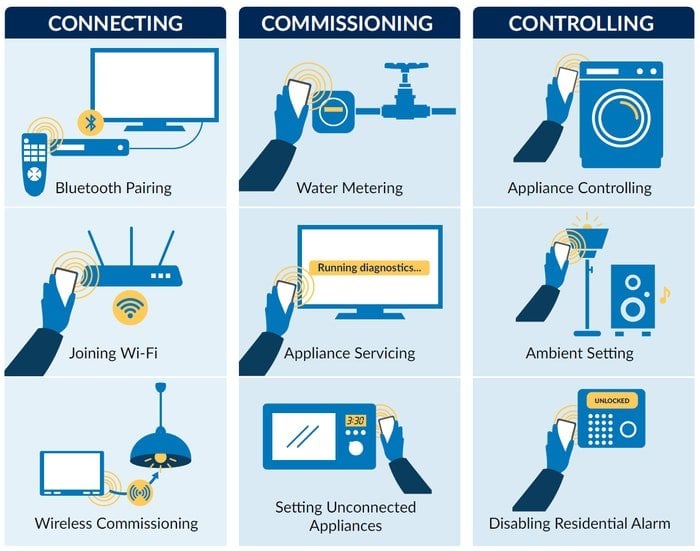 NFC from the IoT Protocols takes the benefit of safe two-way communication linking. Recently, we saw that the NFC IoT Communication Protocols are applicable to smartphones.
NFC from the IoT Protocols takes the benefit of safe two-way communication linking. Recently, we saw that the NFC IoT Communication Protocols are applicable to smartphones.
NFC or Near Field Communication allows clients to connect to electronic devices, use digital content, and do contactless payment transactions. The essential work of NFC is to expand the “contactless” card technology. It works within 4cm (between devices) by enabling the devices to share information.
8. Cellular
There are a lot of IoT applications that may call for operation over a longer remoteness. These IoT applications can take the help of Cellular communication capabilities like GSM/3G/4G. Cellular is one of the IoT Communication Protocols that can send or transfer a large amount of data. Here, you have to remember the cost.
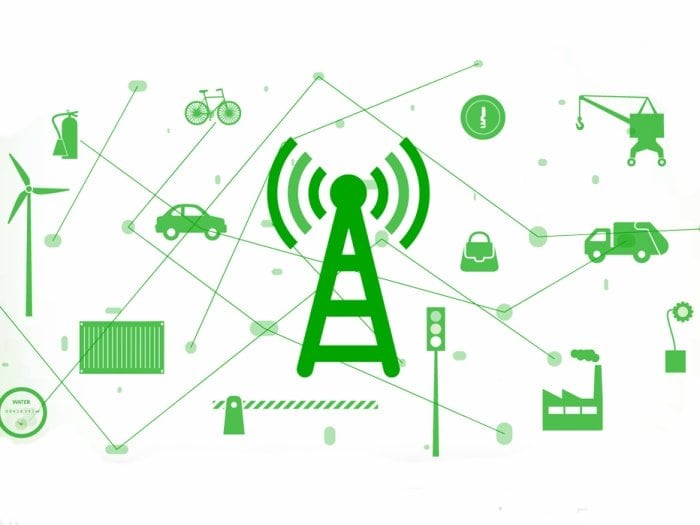 The fee for sending a high quantity of data will be high too. Cellular needs not only high cost but also high power consumption for several applications. This Internet of Things Protocol is amazing for low-bandwidth sensor-based data projects. This is because they can send very little data or information on the Internet.
The fee for sending a high quantity of data will be high too. Cellular needs not only high cost but also high power consumption for several applications. This Internet of Things Protocol is amazing for low-bandwidth sensor-based data projects. This is because they can send very little data or information on the Internet.
It includes the low-cost development board of authentic tiny CELLv1.0. It also has a range of shield that connects boards (so that you can use them with the Arduino and Raspberry Pi platforms.) Here, the key product is SparqEE.
9. AMQP
Advanced Message Queuing Protocol, or AMQP, is an application layer protocol. It is basically message-oriented and designed for middleware environments. The AMQP IoT messaging protocols got approval as an international standard. The processing chain of AMQP IoT Protocol consists of 3 necessary components: Exchange, Message Queue, and Binding.
The Exchange part works by getting the message and putting them in the queues. The job of the Message Queue is to store the message, and it stores the information until the client app safely develops the messages. The Binding Component’s work states the connection between the Exchange Component and the Message Queue Component.
10. LoRaWAN
LoRaWAN, or the Long-Ranged Wide Area Network, is one of the IoT Protocols for wide-area networks. LoRaWAN IoT Network Protocols is specifically designed to support vast networks with the help of millions of low-power devices. Smart cities use this kind of protocol.
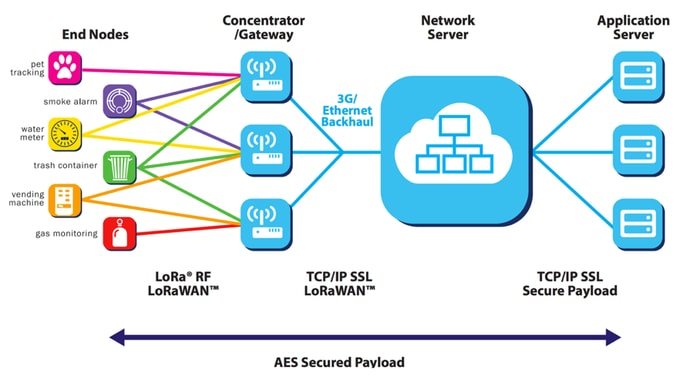 Including low-cost mobile communication, LoRaWAN is also famed in scores of industries for protected bi-directional communication. The frequency of LoRaWAN may vary from network to network. The data rates of these Internet of Things Protocols run between 0.3-50 kbps. In the urban areas, the range of LoRaWAN varies from 2 km to 5 km. In suburban areas, the range of this IoT protocol is about 15 km.
Including low-cost mobile communication, LoRaWAN is also famed in scores of industries for protected bi-directional communication. The frequency of LoRaWAN may vary from network to network. The data rates of these Internet of Things Protocols run between 0.3-50 kbps. In the urban areas, the range of LoRaWAN varies from 2 km to 5 km. In suburban areas, the range of this IoT protocol is about 15 km.
11. RFID
The Radio Frequency Identification of RFID works with the help of wireless technology. It uses electromagnetic fields so that it can identify objects. The short-ranged Radio Frequency Identification is around 10 cm. But the long-range Radio Frequency can go up to 200 mm.
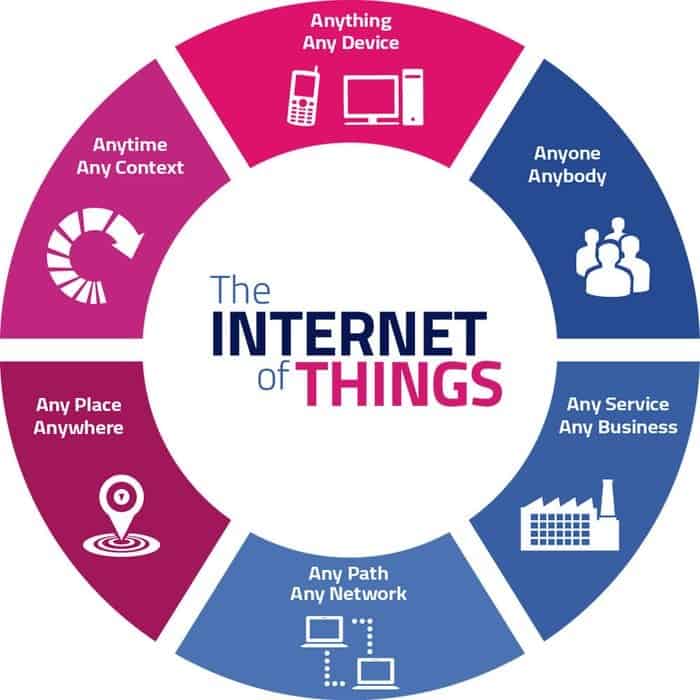 The ARAT or the Active Reader Active Tag system usually makes use of the active. These activity tags awake with an interrogator signal (signals from the active reader.)The best part of RFID IoT Connectivity Protocols is they do not need any power.
The ARAT or the Active Reader Active Tag system usually makes use of the active. These activity tags awake with an interrogator signal (signals from the active reader.)The best part of RFID IoT Connectivity Protocols is they do not need any power.
12. Z-Wave
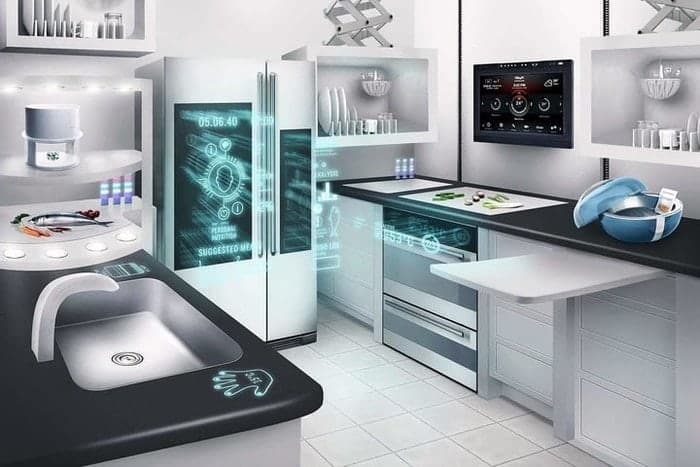 Z-Wave IoT Protocols afford you low-power RF or Radio Frequency communications. We typically use these in our home automation applications. The sensors, lamp controllers, etc., are the low-power Radio Frequency.
Z-Wave IoT Protocols afford you low-power RF or Radio Frequency communications. We typically use these in our home automation applications. The sensors, lamp controllers, etc., are the low-power Radio Frequency.
This low-latency technology also has more features of shielding from wireless technologies (such as WiFi.) This works with the help of functioning in the sub-1GHz band. Designers are concerned with the simple and rapid development process of IoT Protocols.
They are working for the easy setup of Z-Wave IoT Protocols. The frequency of Z-Wave Internet of Things Protocols is 900MHz, and the range is about 30-100m. It provides you with Cloud access and requires a bridge for it. Data rates of this protocol are 40-100kbit/s
13. Sigfox
Sigfox is one of the best alternative technologies that bear Cellular and WiFi attributes. As Sigfox IoT Protocol was developed and designed for the M2M applications, it can only send data of a low level. With the help of UNB or Ultra Narrow Band, Sigfox can hold speeds of 10 to 1000 bits per second to transfer low data. It only consumes 50 microwatts of power.
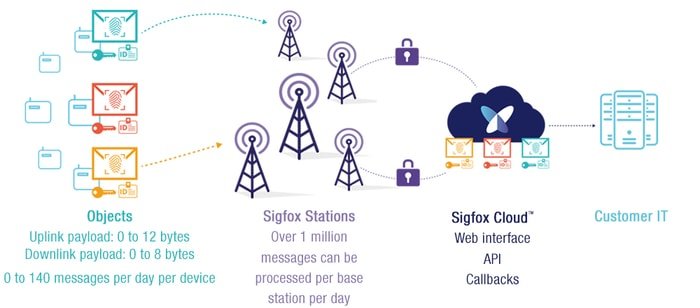 The frequency of the IoT Connectivity Protocols Sigfox is 900MHz and has Could-access. Sigfox IoT Protocol covers a range of 30 km to 50 km in rural environments. In urban areas, the range of this protocol is 3-10 km.
The frequency of the IoT Connectivity Protocols Sigfox is 900MHz and has Could-access. Sigfox IoT Protocol covers a range of 30 km to 50 km in rural environments. In urban areas, the range of this protocol is 3-10 km.
14. Thread
One of the most recent Internet of Things protocols that have come on the scene is IoT security protocols Thread. The inventor of Next has designed this protocol. In the home automation application, this IoT Protocol is now ramping up its usage. This is an IP-based IPv6 networking protocol, and it is based on the 6LowPAN.
It was chiefly designed to complement WiFi inside the home. This protocol is royalty-free. This protocol supports the mesh networking within radio transceivers of IEEE802.15.4. It can handle about 250 nodes, along with encryption and authentication. The frequency of Thread IoT Protocol is 2.4GHz (ISM), and it can cover up to 10-30m.
15. EnOcean
Among the IoT Connectivity Protocols, EnOcean takes an innovative twist. It is a wireless sensing and energy-harvesting platform. It is perfect for designing devices that need a response in different circumstances, such as changes in temperature, lighting, and other patchy situations.
Most of the applications for this IoT Protocol are presently exercised in transportation, home automation, industrial automation, and logistics. The frequency of the EnOcean IoT Protocol is 315 MHZ, 868 MHz, and 902 MHz. It provides you access to Cloud; the range it covers is 300m outdoors and 30m indoors.
Final Verdict
There are various protocols available out there to choose from if you are working on any IoT Project. To make your decision easier than ever, we are presenting these protocols with all the excellent points. So which one are you going to choose?
Before selecting your desired protocol, know the protocol’s bandwidth, range, power consumption, and node. Have you ever used any of these protocols that we have reviewed? Leave a comment below to let us know, and tell your friends about us by sharing our reviews.
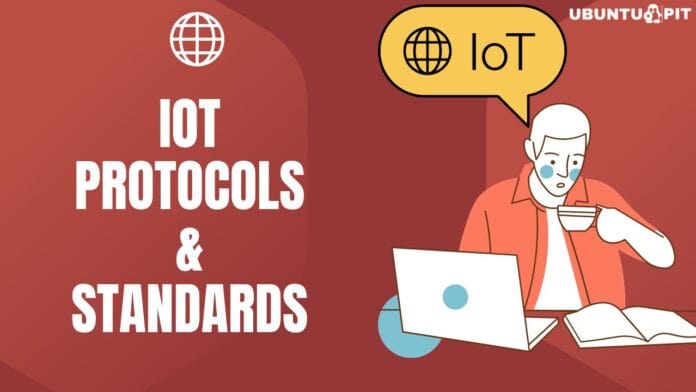
What´s about IoTA, I think in some years many people will know the technology…
Where does 5G fit in? Is it only to replace cellular or will it also replace other technologies?
where does KNX fit in?
hello, the information is good , just you are mixing two matters differents, one is the communication protocols, and the second is technologies of transmission. just to keep iin mind
Agree, messaging & networking protocols mixed up….
Very good point. I am confusing now. I am not sure which one is protocol and which one is technologies of transmission :/
Nice summary for an IoT nood like myself. Thanks.